On my visit to San Diego, while attending the SASH conference, I took some time to be a tourist when the conference ended. My husband had a meeting at the same time close by so we made a rendezvous to enjoy some outdoor activities in the area. My wish for outdoor activities included cycling and sea lion watching. My husband was up for sea lions, but preferred to add ocean kayaking to the list of fun. With limited time we compromised by deciding on ocean kayaking that would include a trip by a peninsula that sea lions were known to inhabit.
This excursion was my first ocean kayaking experience. My husband has a passion for the water. While I grew up on the Atlantic Ocean, I am more comfortable on land, but I do love the sea from the distance (or on a fast speed boat!). We began our trek in the kayak out towards the sea lions off in the distance. As we ventured out, the Pacific Ocean was quite calm. The stillness of the water was a real selling point for me to agree to this activity. I am not the strongest of swimmers and have a healthy fear of water. After a while my anxious feelings began to settle. It was even becoming quite enjoyable as we approached the sea lion area. We were in an alcove of limestone cliffs but were warned not to get close to the shore in that area as the ocean could carry us in pretty quickly and possibly slam us into the rocks. Occasionally a few swells would come along that would serve to gently rock our kayak in a bobbing fashion. All of a sudden, seemingly out of nowhere appeared a guide which cautioned us that some large swells were coming in and to get prepared!  Oh my, this was not in the plan! I turned to see that I could no longer see the horizon and could only see what felt like a wall of water coming towards us! We knew that we had to face into the direction of the swell to keep from being toppled. Thankfully we were able to maneuver properly. Along came another large swell that prevented us from seeing the horizon. It was so tall if felt as if it would break over top of us. For me, this was very frightening. I didn’t panic, but I found myself going through a protocol of water safety “what if” scenarios in my head. A third very large swell came along. I thought my husband would better know how to take care of himself than I would if we toppled, but I am sure I could make it, but there was a lot of trepidation!
Oh my, this was not in the plan! I turned to see that I could no longer see the horizon and could only see what felt like a wall of water coming towards us! We knew that we had to face into the direction of the swell to keep from being toppled. Thankfully we were able to maneuver properly. Along came another large swell that prevented us from seeing the horizon. It was so tall if felt as if it would break over top of us. For me, this was very frightening. I didn’t panic, but I found myself going through a protocol of water safety “what if” scenarios in my head. A third very large swell came along. I thought my husband would better know how to take care of himself than I would if we toppled, but I am sure I could make it, but there was a lot of trepidation!
Being out in San Diego for my professional conference I thought of the couple faced with sex addiction and the parallel to this excursion. Often we enter marriage with the idea that it will be smooth sailing. Rough seas are a possibility but they remain out of our minds. The metaphor of us in the kayak is we are in this together, like it or not, and we are two different people with different skillsets! When sex addiction is revealed in a marriage, it can produce a panic similar to the large swells we encountered out there on the Pacific Ocean. At that moment, one cannot see anything except the crisis at hand the way we could only see the wall of water. It is large. It is ominous. It feels like one might not live through it. There are waves of it coming and waves of it passing, seemingly without warning, and rhyme or reason. One feels an eminent danger. There is a need to find a way from being toppled without the ability to see the horizon. Couples faced with sex addiction are forced to come up with safety plans for safe passage through deep, murky and dangerous-feeling waters. Couples need a plan, a set of safety regulations, and a set of skills to guide them to safety.
A CSAT therapist specifically trained in Sex Addiction can be a helpful guide to teach skills and navigate to safe waters in marriages that find themselves in the swells they feel like they might not survive.

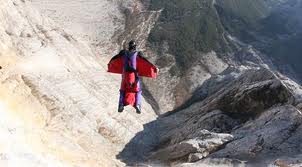 Well that caught my attention! As the scene showed him jumping off the mountain in his flying suit, I thought of those who struggle in the diseases of addiction. Addiction-to-recovery is a dying-to-flying tale. The tools of recovery offer the addict the opportunity to right a hopeless path.
Well that caught my attention! As the scene showed him jumping off the mountain in his flying suit, I thought of those who struggle in the diseases of addiction. Addiction-to-recovery is a dying-to-flying tale. The tools of recovery offer the addict the opportunity to right a hopeless path. 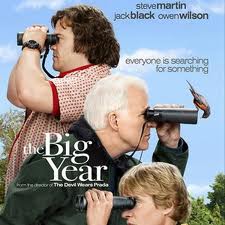
 I watched the movie with interest as conquest, compulsion, and secrecy affected the characters' family relationships and their relationships with one another. Each man in competition with the other tries to hide their true motives from one another. This act of secrecy shapes their relationships, as well. We watch secrecy shape their relations with one another and their primary relationships. And so it is with sex addiction.
I watched the movie with interest as conquest, compulsion, and secrecy affected the characters' family relationships and their relationships with one another. Each man in competition with the other tries to hide their true motives from one another. This act of secrecy shapes their relationships, as well. We watch secrecy shape their relations with one another and their primary relationships. And so it is with sex addiction.
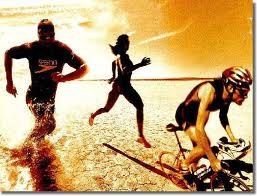 I spend a lot of time training for events in my life both personally and professionally. I am a goal oriented person. I attribute much of the achieved success I have aimed for in my life to goal setting and surrounding myself with a supportive network to achieve those goals. I have thought how similar that is to those I see who are successful in their recovery processes from addiction. Nowhere in my life is that training more evident than in the endurance sports I engage in and the circle of endurance athletes I am privileged to observe and hang with.
I spend a lot of time training for events in my life both personally and professionally. I am a goal oriented person. I attribute much of the achieved success I have aimed for in my life to goal setting and surrounding myself with a supportive network to achieve those goals. I have thought how similar that is to those I see who are successful in their recovery processes from addiction. Nowhere in my life is that training more evident than in the endurance sports I engage in and the circle of endurance athletes I am privileged to observe and hang with.
 Life, as they knew or thought it to be, changes in an instant. PTSD from the trauma continues as they lose so much in the transaction of the discovery invasion. The spouse of the addict loses their way, their orientation to life, and the things they thought that were, aren’t. They lose the feelings of specialness to their spouse that was felt in the marriage. It is a betrayal like no other. For the addict there are casualties, as well. The addict is often caught by a surprise attack. They are left to defend the territory of addiction. They are lost in a world of disorientation from the occupation of the addiction and the shame of being discovered. It is a difficult labyrinth for both sides of the war at this point. I have both spouses and addicts contact me in the aftermath of discovery. I can assure you it is painful and the wounds are severe for both soldiers in the opposing armies.
Life, as they knew or thought it to be, changes in an instant. PTSD from the trauma continues as they lose so much in the transaction of the discovery invasion. The spouse of the addict loses their way, their orientation to life, and the things they thought that were, aren’t. They lose the feelings of specialness to their spouse that was felt in the marriage. It is a betrayal like no other. For the addict there are casualties, as well. The addict is often caught by a surprise attack. They are left to defend the territory of addiction. They are lost in a world of disorientation from the occupation of the addiction and the shame of being discovered. It is a difficult labyrinth for both sides of the war at this point. I have both spouses and addicts contact me in the aftermath of discovery. I can assure you it is painful and the wounds are severe for both soldiers in the opposing armies.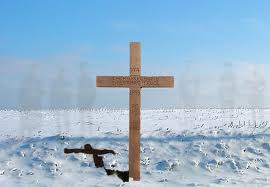 Disclosure is not just coming clean in confession after the discovery. Disclosure must be planned and executed as carefully as the Normandy Invasion was planned for. To haphazardly just rush in could be disastrous for the campaign of winning the war. Disclosure should be done purposefully with the skill of trained therapists with experience of how to structure disclosure for the maximum chance of success.
Disclosure is not just coming clean in confession after the discovery. Disclosure must be planned and executed as carefully as the Normandy Invasion was planned for. To haphazardly just rush in could be disastrous for the campaign of winning the war. Disclosure should be done purposefully with the skill of trained therapists with experience of how to structure disclosure for the maximum chance of success. 
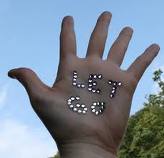

 Trying not to hit the cars around me I said “You’ll have to read it to me, sweetie, because I can’t look at this instant.” Mommy what does “ ’No cover charge’ mean?” Huh? We got out of the car and walked to the pedestrian bridge designed to allow pedestrians to cross over 4 lanes of traffic. The plane circled by, yet again. This time I could see the sign and realized it was an advertisement for an Atlanta Night club a.k.a “a strip club”. While we crossed on the bridge over 4 lanes of highway traffic, passing pedestrians going the other way to leave the venue, no less than four times, I heard 4 different groups of men loudly talking about what a great strip club that was. It was repetitive and loud enough for my daughter to wonder what the conversations were about. Oh boy, this is going to be a great event. I am a therapist with specific training in matters regarding child development, sex, sex addiction, and pretty current on headline topics. What does the untrained parent do in this situation? I felt for them.
Trying not to hit the cars around me I said “You’ll have to read it to me, sweetie, because I can’t look at this instant.” Mommy what does “ ’No cover charge’ mean?” Huh? We got out of the car and walked to the pedestrian bridge designed to allow pedestrians to cross over 4 lanes of traffic. The plane circled by, yet again. This time I could see the sign and realized it was an advertisement for an Atlanta Night club a.k.a “a strip club”. While we crossed on the bridge over 4 lanes of highway traffic, passing pedestrians going the other way to leave the venue, no less than four times, I heard 4 different groups of men loudly talking about what a great strip club that was. It was repetitive and loud enough for my daughter to wonder what the conversations were about. Oh boy, this is going to be a great event. I am a therapist with specific training in matters regarding child development, sex, sex addiction, and pretty current on headline topics. What does the untrained parent do in this situation? I felt for them.
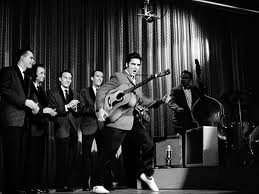

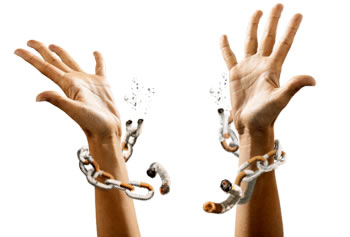 Often one might feel the hell one knows is often better than the hell one doesn’t know. There is necessity to trust and let go just as one has to lift one’s feet off the ground to place them on the pedals of the bike. As on the bike, one needs to begin to find a new balance. I remind my clients to look at their focus in early recovery as I reminded my daughter to focus on successfully riding the bike. I ask my clients are you focusing on not using? Or are you focusing on gaining the skills that support the balance of recovery. In treatment we are building skills of successful recovery.
Often one might feel the hell one knows is often better than the hell one doesn’t know. There is necessity to trust and let go just as one has to lift one’s feet off the ground to place them on the pedals of the bike. As on the bike, one needs to begin to find a new balance. I remind my clients to look at their focus in early recovery as I reminded my daughter to focus on successfully riding the bike. I ask my clients are you focusing on not using? Or are you focusing on gaining the skills that support the balance of recovery. In treatment we are building skills of successful recovery.